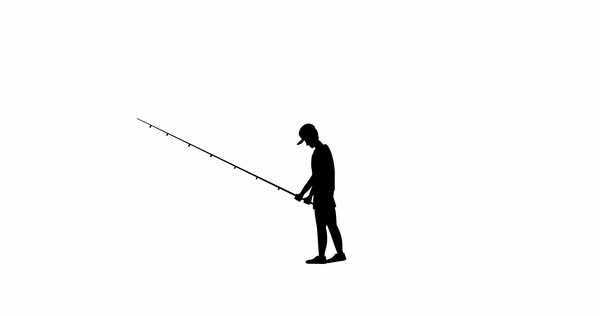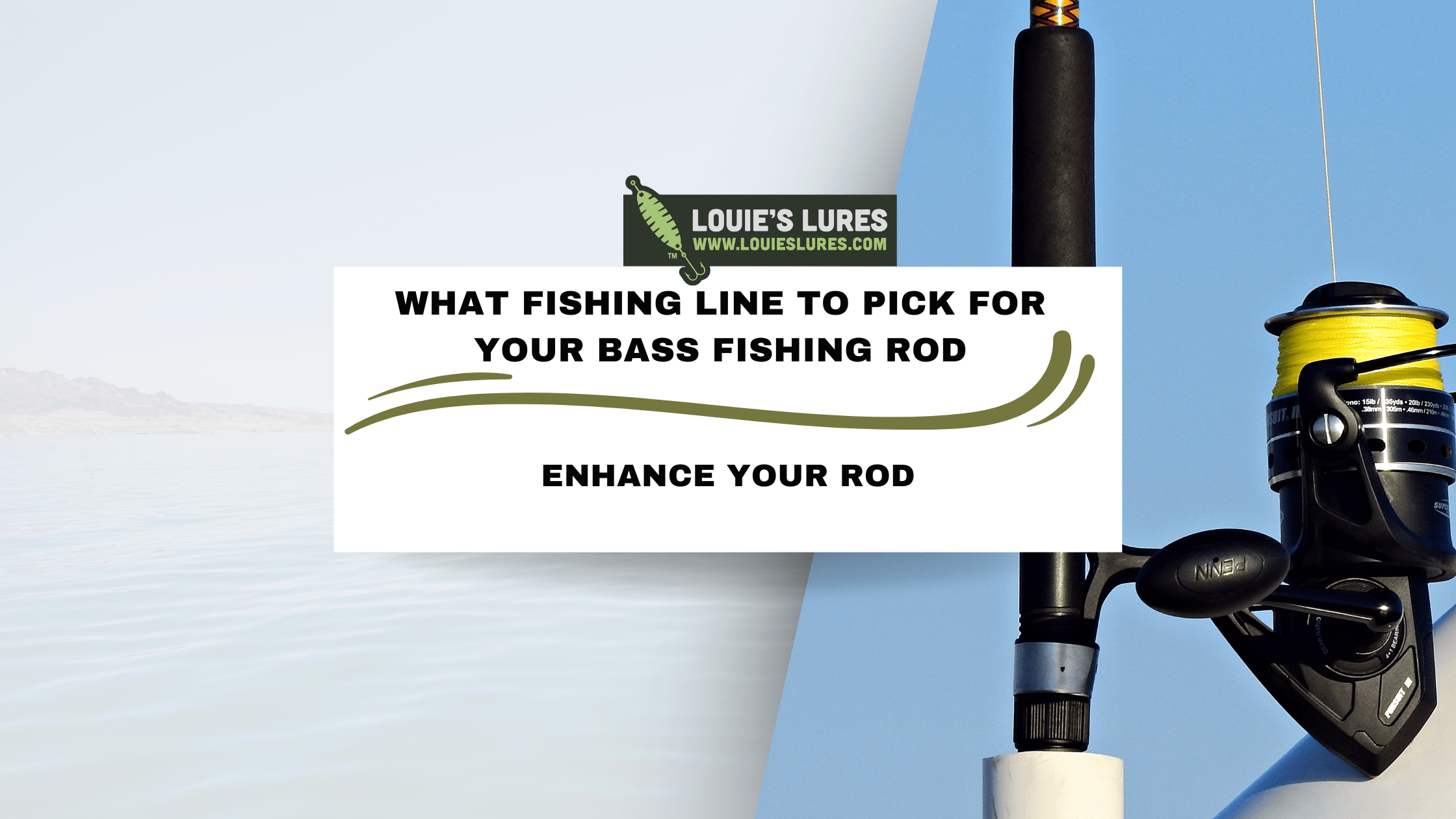.jpg)
Are you struggling to choose the right fishing line for your bass fishing adventures? Look no further!
In this comprehensive guide, we will explore the three main types of fishing lines – monofilament, fluorocarbon, and braided – and discuss the pros and cons of each for bass fishing.
We will also delve into the factors to consider when selecting a fishing line, such as water clarity, cover and structure, fishing techniques, and personal preference.
Stay tuned to learn how to choose the perfect fishing line for your bass fishing rod!
Key Takeaways:
- 1. Choosing the right fishing line for your bass fishing rod is crucial for success on the water.
- 2. Monofilament line is versatile and great for beginners, but may not be suitable for certain fishing conditions.
- 3. Consider factors such as water clarity, cover and structure, and personal preference when selecting a fishing line for bass fishing.
Why is Choosing the Right Fishing Line Important for Bass Fishing?
Selecting the appropriate fishing line is crucial for successful bass fishing excursions, as it directly impacts the angler’s ability to lure and reel in largemouth or smallmouth bass.
In terms of choosing the right fishing line for bass fishing, one must consider various factors to enhance their overall fishing experience. Different types of fishing lines such as monofilament, fluorocarbon, and braided lines offer unique characteristics that can influence casting accuracy, sensitivity, and resilience to wear and tear.
For instance, monofilament lines are popular for their stretch, which can be beneficial when dealing with aggressive bass that tend to make sudden runs. On the other hand, fluorocarbon lines provide low visibility underwater, making them ideal for clear water conditions and subtle presentations.
Braided lines, known for their strength and thin diameter, offer superior sensitivity, allowing anglers to detect even the slightest of bites. By selecting the appropriate fishing line, anglers can optimize their setup for different bass fishing techniques such as flipping, pitching, or crankbait fishing.
Monofilament Fishing Line
.jpg)
Monofilament fishing line is a popular choice among bass anglers due to its versatility and forgiving nature, making it suitable for various bass fishing techniques.
What is Monofilament Fishing Line?
Monofilament fishing line is a single-strand nylon fishing line known for its stretchability and ease of use, making it a popular choice among bass anglers for its versatility.
Its composition involves a single continuous strand of nylon, giving it a smooth surface that allows for easy casting and knot tying. This type of fishing line also offers good abrasion resistance, which is beneficial when fishing around rocks or other abrasive structures where bass often hide.
Due to its stretchy nature, monofilament lines provide a level of forgiveness when setting the hook, preventing it from tearing out of the fish’s mouth too quickly, which is advantageous in bass fishing scenarios where a strong hookset is crucial.
Pros and Cons of Using Monofilament Fishing Line for Bass Fishing
Monofilament fishing line offers benefits such as shock absorption and cost-effectiveness, but it may lack sensitivity and have higher visibility underwater, affecting its performance in certain bass fishing conditions.
One of monofilament fishing line’s significant advantages is its flexibility, which comes in handy when casting different types of lures and handling unpredictable movements of bass. Its shock absorption properties can be beneficial in preventing line breakage when battling with aggressive fish. On the downside, the high visibility of monofilament line underwater can spook wary bass, especially in clear waters, making it less effective in stealth fishing approaches. Its limited sensitivity may make it harder to detect subtle bites from cautious bass, leading to missed hooksets.
When is Monofilament Fishing Line Best Used for Bass Fishing?
Monofilament fishing line is ideal for topwater fishing techniques and situations where shock absorption and flexibility are crucial, making it a preferred choice for bass anglers in specific scenarios.
When using monofilament line for topwater fishing, its ability to float creates a natural presentation on the water’s surface, enticing bass to strike. The line’s stretch also helps in absorbing the powerful surges and jumps of bass during a fight, preventing sudden breaks that could result from their aggressive behavior. Additionally, monofilament lines work well with crankbaits and spinnerbaits, offering the right balance of visibility, strength, and shock resistance required for these specific techniques.
Fluorocarbon Fishing Line
Fluorocarbon fishing line is a popular choice among bass anglers for its low visibility underwater and abrasion resistance, making it suitable for various bass fishing techniques.
What is Fluorocarbon Fishing Line?
Fluorocarbon fishing line is a dense and virtually invisible fishing line that sinks in water, making it an excellent choice for bass anglers seeking stealth and sensitivity in their fishing setup.
One of the standout features of fluorocarbon fishing line is its low visibility underwater, which is crucial when targeting finicky bass that are easily spooked by traditional lines. Its density allows for better sensitivity, enabling anglers to feel even the slightest bites. Its ability to sink quickly is advantageous when fishing deep waters where bass tend to lurk. The abrasion-resistant nature of fluorocarbon provides durability in rough terrains, reducing the chances of break-offs during intense bass battles.
Pros and Cons of Using Fluorocarbon Fishing Line for Bass Fishing
Fluorocarbon fishing line offers advantages such as low visibility and abrasion resistance but may be stiffer and less forgiving than other types of fishing lines, affecting its performance in specific bass fishing scenarios.
Low visibility is a crucial feature when targeting bass, as it reduces the chances of spooking the fish in clear water conditions. The abrasion resistance of fluorocarbon can be beneficial when fishing around rocks or other rough structures where the line may come into contact with abrasive surfaces. The stiffness of fluorocarbon can make it less manageable, especially in situations that require casting finesse and delicate presentations. This lack of flexibility may impact the lure’s natural movement and the angler’s ability to detect subtle strikes from bass.
When is Fluorocarbon Fishing Line Best Used for Bass Fishing?
Fluorocarbon fishing line excels in scenarios requiring stealth and sensitivity, making it ideal for finesse fishing techniques and clear water conditions favored by bass anglers seeking a stealthy approach.
When targeting wary bass in heavily pressured waters, the low visibility and minimal stretch of fluorocarbon help in presenting baits naturally without alerting the fish. Its ability to transmit even the subtlest of bites ensures that anglers can detect finicky bass nibbling on their offerings. Whether finesse fishing with delicate lures like drop shots or fishing in ultra-clear lakes where visibility is critical, fluorocarbon’s near-invisibility underwater gives anglers an edge. The line’s abrasion resistance also comes into play when maneuvering around rocks and debris in these environments, offering durability and reliability in challenging conditions.
Braided Fishing Line
.jpg)
Braided fishing line, known for its exceptional strength and sensitivity, is a popular choice among bass anglers for its durability and performance in challenging fishing conditions.
What is Braided Fishing Line?
Braided fishing line consists of multiple strands of synthetic fibers woven together, creating a strong and durable line that offers minimal stretch and high sensitivity, making it a preferred choice for bass anglers seeking reliability and power.
This type of line is known for its ability to withstand rough conditions and heavy cover, where monofilament or fluorocarbon lines might fail. The lack of stretch in braided lines allows anglers to feel even the slightest nibble or movement, enabling quick and precise hook sets.
The thin diameter of braided line compared to its strength-to-size ratio allows for casting further distances and better control over the bait presentation, particularly useful when targeting bass in various types of water structures.
Pros and Cons of Using Braided Fishing Line for Bass Fishing
Braided fishing line offers benefits such as strength and sensitivity but may be prone to line visibility and require special knots for secure attachment, influencing its effectiveness in certain bass fishing situations.
One advantage of braided fishing line is its exceptional durability, capable of withstanding the rough terrain and abrasive structures often encountered when bass fishing. Its thin diameter allows for increased line capacity on the reel, enabling anglers to cast further distances with ease.
A major drawback of using braided line is its high visibility in clear water, potentially spooking wary bass. To mitigate this issue, anglers can utilize fluorocarbon or monofilament leaders to add some level of invisibility to their setup.
When is Braided Fishing Line Best Used for Bass Fishing?
Braided fishing line excels in scenarios demanding strength and sensitivity, making it an excellent choice for heavy cover fishing and techniques that require strong hook sets often encountered by bass anglers in challenging environments.
In terms of bass fishing, braided lines offer several advantages over monofilament or fluorocarbon lines. The lack of stretch in braided lines allows anglers to feel even the subtlest of bites, crucial in bass fishing where bites can be quick and delicate. The thin diameter of braided lines allows for longer casts, ideal for reaching those elusive bass hiding in deeper waters or around structures.
- Applications like pitching and flipping in dense vegetations become easier with braided lines as they cut through the vegetation, allowing for precise presentations without worrying about line breakage. The strength of braided lines also comes into play when punching through heavy vegetation to target bass hiding in the thick cover.
The durability, strength, and sensitivity of braided lines make them a top choice for bass anglers looking to tackle challenging environments and land the big ones.
Factors to Consider When Choosing a Fishing Line for Bass Fishing
Various factors influence the selection of fishing line for bass fishing, including water clarity, fishing techniques, cover and structure, and personal preferences, all of which play a crucial role in determining the most suitable fishing line for a successful angling experience.
Water Clarity
Water clarity significantly influences the choice of fishing line for bass fishing, as clear water conditions may require invisible lines like fluorocarbon, while murky waters allow for more versatility in line selection based on other factors.
In clear water, fluorocarbon lines are ideal due to their near invisibility, which reduces the chances of spooking cautious bass. This is crucial when the fish are easily scared by visible lines.
On the other hand, in murky conditions, anglers might opt for braided lines for their durability and strength, which are more visible but can handle rougher terrains.
In stained waters, monofilament lines offer a balance between visibility and stretch, aiding in controlling the lure and setting the hook effectively. Understanding these nuances of different fishing lines helps anglers adapt their gear to varying water conditions for successful bass fishing ventures.
Cover and Structure
Understanding the cover and structure of the fishing environment is crucial when selecting a fishing line for bass fishing, as different lines perform better in varying structures such as vegetation, rocks, or open water.
For instance, when fishing in heavy cover with thick vegetation, using a braided line can be advantageous due to its higher abrasion resistance and durability, allowing anglers to pull bass out of dense cover without worrying about the line breaking. On the other hand, in rocky bottoms, a fluorocarbon line might be more suitable as it is less visible underwater and more resistant to abrasion from sharp rocks. In open water areas, a monofilament line offers good manageability and buoyancy, making it ideal for techniques like topwater fishing.
Fishing Techniques
Matching the fishing line to the chosen techniques is essential for successful bass fishing, as certain methods like topwater or finesse fishing require specific line types to maximize their effectiveness and sensitivity.
For flipping techniques, a strong braided line is highly recommended due to its abrasion resistance and superior strength, making it ideal for pulling big bass out of heavy cover.
On the other hand, when using crankbaits that require long casts and diving depths, a monofilament line is preferred for its buoyancy and stretch, which helps prevent the lure from diving too deep and provides better control during retrieval.
When employing drop shots, a fluorocarbon line is often the go-to choice because of its low visibility underwater and minimal stretch, allowing anglers to feel even the slightest bites.
Each technique demands a different line characteristic to optimize performance and increase the chances of a successful bass fishing excursion.
Personal Preference
Personal angler preferences play a significant role in the choice of fishing line for bass fishing, as comfort, experience, and familiarity with specific lines can influence one’s confidence and success on the water.
When selecting a fishing line, confidence stands out as a crucial element. Anglers often lean towards lines that they trust and have experience using, as this familiarity translates into better performance during their fishing expeditions. Whether it’s the smoothness of a particular line that they find comfortable to handle or the reliability they associate with a certain brand, these aspects greatly impact their overall fishing experience.
Conclusion
Selecting the right fishing line tailored to the specific needs of bass fishing is paramount for achieving angling success, as each type of line offers unique benefits and considerations that can enhance an angler’s fishing experience.
When deciding on the fishing line for bass fishing, anglers should take into account factors such as the visibility of the line, its strength, stretch, and abrasion resistance.
Fluorocarbon lines are known for their low visibility underwater, making them ideal for clear water conditions. On the other hand, monofilament lines offer excellent versatility and stretch, absorbing shocks from aggressive bass strikes. Braided lines, with their high strength-to-diameter ratio, are great for heavy cover situations where pulling bass out quickly is crucial.
Choosing the Right Fishing Line for Your Bass Fishing Rod
Choosing the perfect fishing line for your bass fishing rod is essential to optimize your angling experience by considering factors like line strength, flexibility, and visibility.
When selecting the ideal fishing line, line weight plays a crucial role in determining the balance of your setup. Different fishing conditions require varying line weights, so understanding the fish species, water conditions, and your fishing style is essential.
Considering casting distance is vital for reaching those desired spots where bass may hide. Opt for a line that offers both strength and minimal memory for smoother casting.
Reel compatibility is another key factor to keep in mind. Ensuring your fishing line matches the reel specifications will enhance your overall performance on the water.
Frequently Asked Questions
What fishing line should I choose for my bass fishing rod?
When it comes to bass fishing, the type of fishing line you choose can greatly impact your chances of success. There are a few different options to consider, each with their own pros and cons.
What weight should my bass fishing line be?
The weight of your fishing line depends on the size and weight of the bass you are targeting. For smaller bass, a lighter line around 6-8 pounds may be suitable. However, for larger bass, you may want to opt for a heavier line around 10-12 pounds.
What is the difference between monofilament, fluorocarbon, and braided fishing lines?
Monofilament lines offer good strength and flexibility, making them a popular choice for beginners. Fluorocarbon lines are virtually invisible underwater and have high sensitivity, but can be more expensive. Braided lines are the strongest and have low stretch, but may not be suitable for all fishing situations.
When should I use monofilament fishing line for bass fishing?
Monofilament lines are a good choice for fishing in clear water and for topwater baits. They have good casting ability and are less likely to get tangled in weeds and structures compared to other types of lines.
When is fluorocarbon fishing line best for bass fishing?
Fluorocarbon lines are great for fishing in clear water conditions, as they are nearly invisible to fish. They also sink faster, making them a good choice for deeper water fishing. However, they can be more brittle and may not be suitable for heavy cover fishing.
What are the downsides to using braided fishing line for bass fishing?
Braided lines can be more expensive compared to other types of fishing line, and they also have high visibility underwater. They are also more likely to get tangled in weeds and structures, which can be frustrating for anglers. Additionally, the lack of stretch in braided lines can make it easier for fish to detect and potentially break the line.








